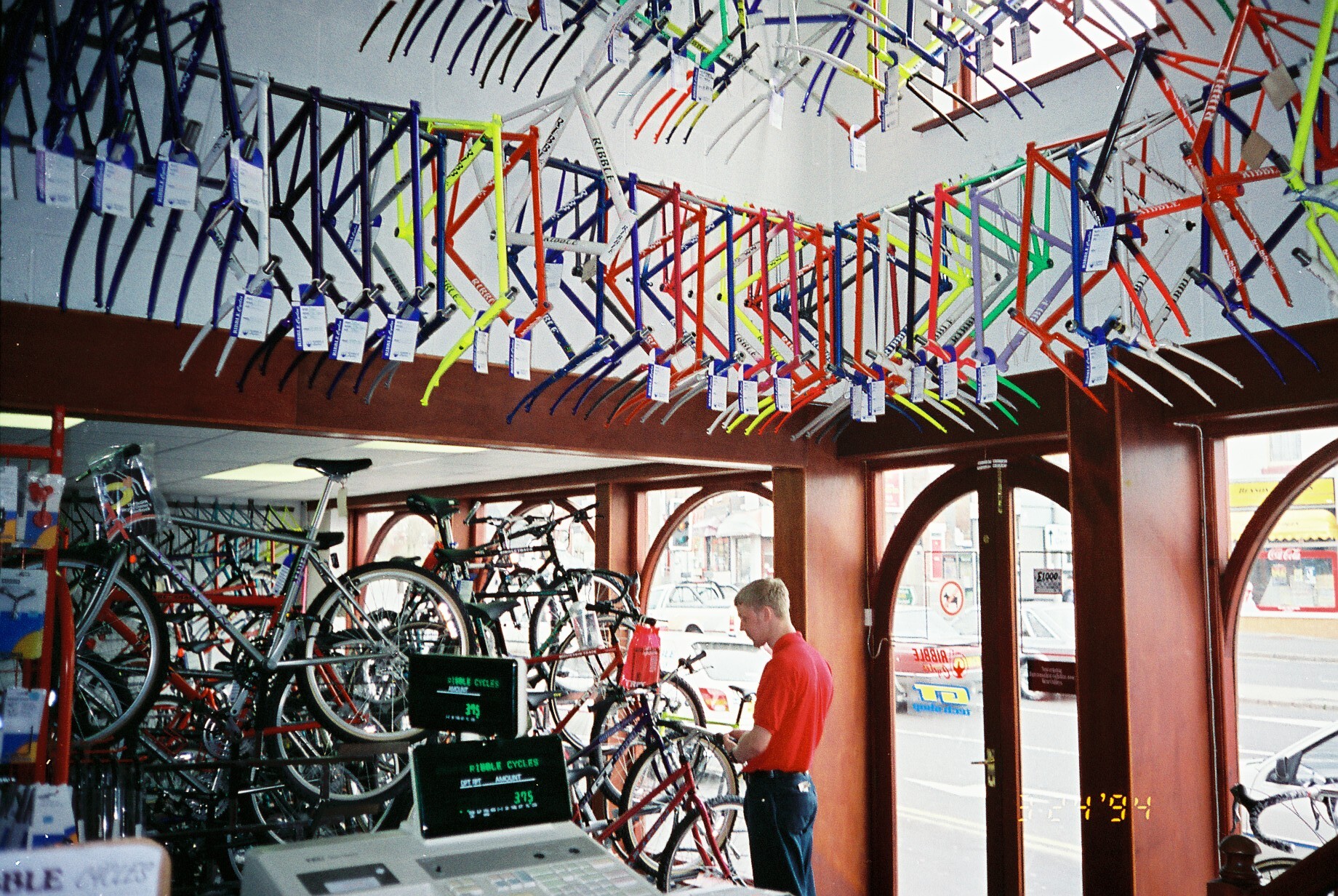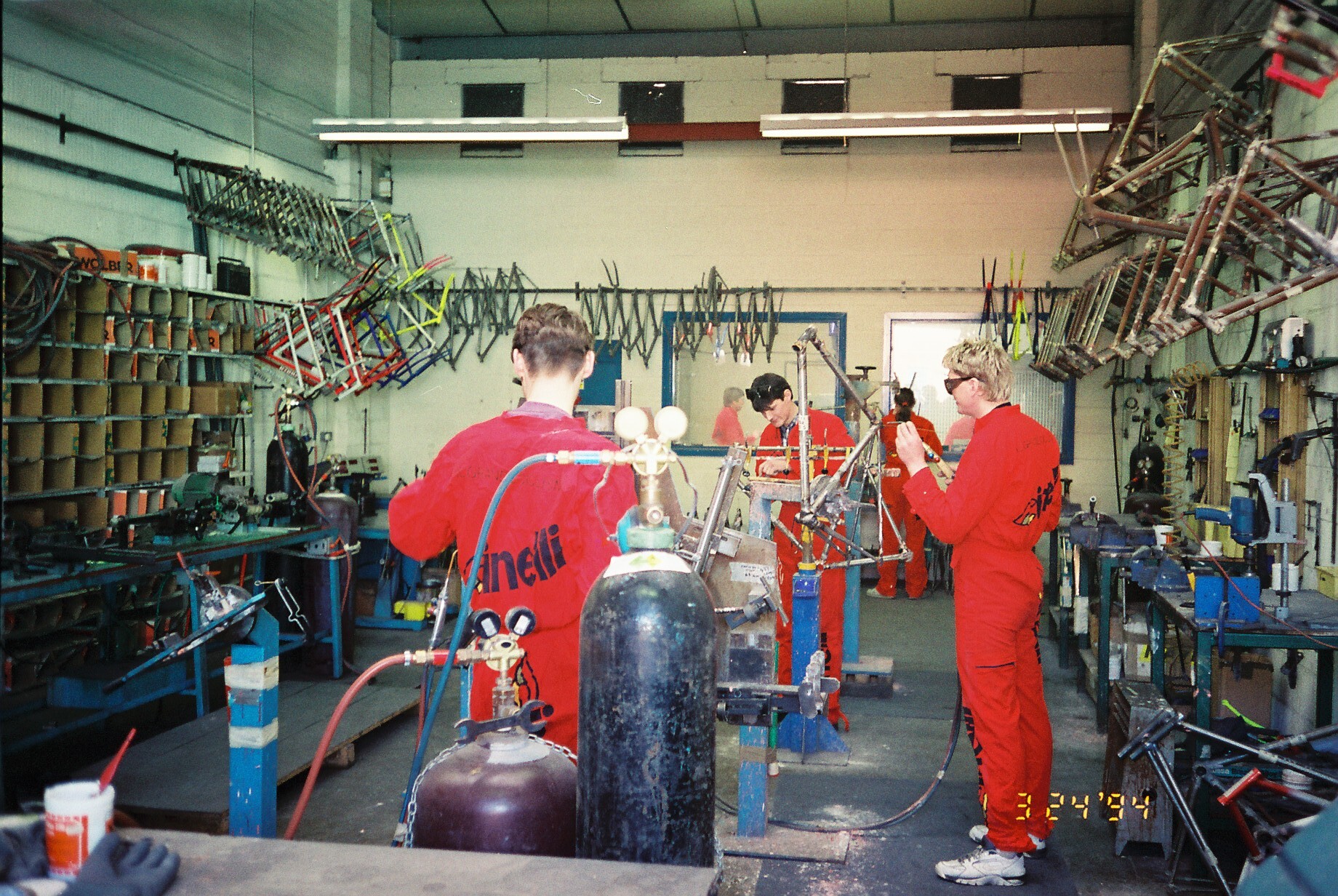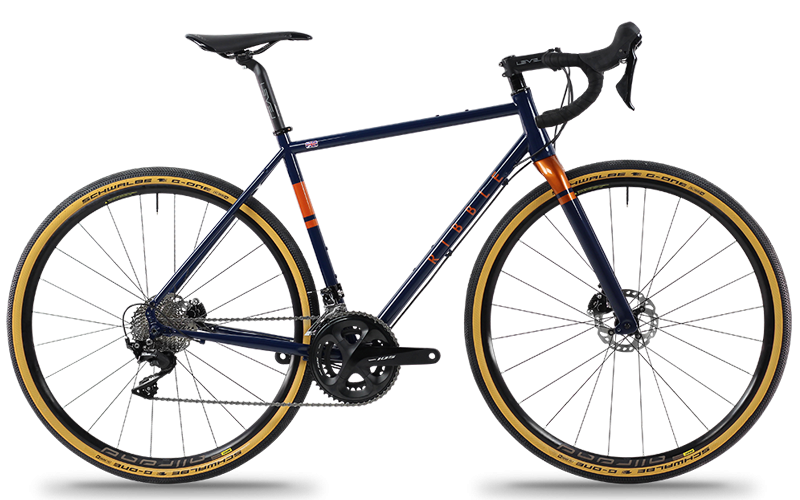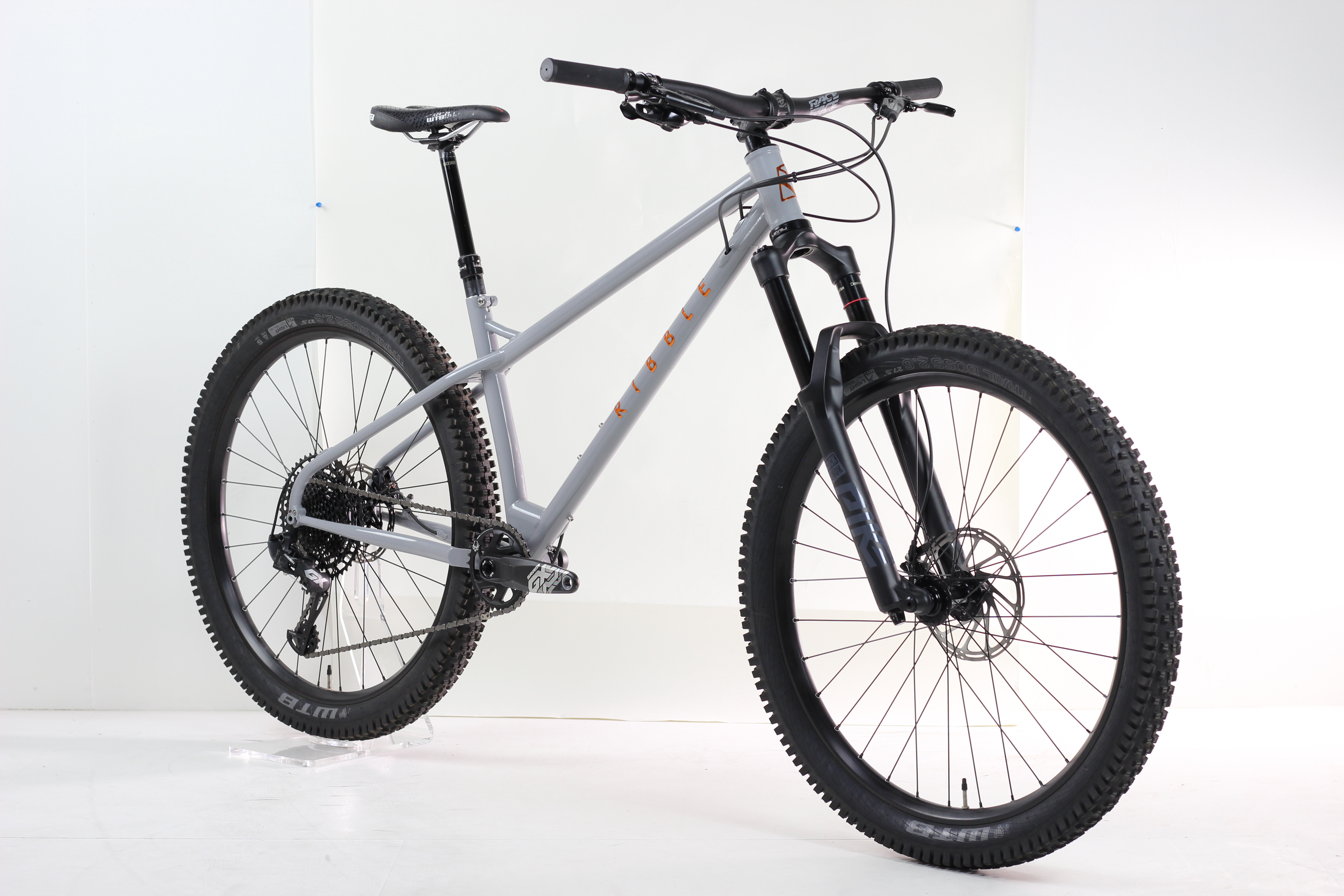
Steel is Real; But what makes it so popular?
'Steel is real' is something anyone who has been around cycling for any time has heard countless times. Steel frames have long since been regarded with a certain reverence in cycling circles. But what is the allure of this seemingly simple material? One that we take for granted on a daily basis and makes grown men go misty-eyed at the merest mention of this exalted material? Read on to find out more;
Firstly, we'll start with a brief history lesson. For the majority of the 20th century, there was only one option when it came to bicycle frames - steel. Every frameset produced today owes its existence to a frame-building tradition that dates back to Victorian Britain. To an era when the might of the industrial revolution was in full swing.
As one of the pioneers of the modern cycle, Ribble can trace its history back to this era. When a warehouseman and cotton goods packer by the name of Richard Thomas Geldeard set up a business fabricating steel bicycle frames from his premises at 35 Watery Lane, Preston. From these premises, he fabricated steel frames, a tradition that would continue for a century and more. Albeit with the frame fabrication workshop being moved to various premises within Preston. The Watery Lane premises remained in use until well into the new millenium and it was from this location that Ribble takes its name. Ribble has always stayed true to its roots, with both our flagship showroom and headquarters being situated in the heart of the picturesque Ribble Valley.

The original Ribble shop on Watery Lane, Preston, in the mid-1990s, adorned with Reynolds Steel frames. The eagle-eyed may spot one of the early Alloy ones too.
The manufacturing process
The traditional process for manufacturing steel frames was to take separate pieces of steel tubing and attach them to a lug (connector). The tubes were then brazed to these lugs rather than welded. Early steel tubing was adversely affected by high temperatures, so the use of more modern techniques such as Tig or Mig welding was an impossibility. Techniques such as silver brazing were employed instead.

Reynolds has been producing steel bike tubing in Birmingham, England, since 1898. Here's one of the latest batches to be engineered.
Today’s advancements in the steel hardening process have resulted in a material that is far more tolerant to higher temperatures. Allowing Tig or Mig welding to become the mainstay of today's modern steel frame construction. These techniques also make lugs superfluous; the separate sections of tubes can now simply be welded to each other. This also has the added advantage of reducing the frame's overall weight.

Ribble's Kirkham workshop circa 1994, with the paint booth in the background.
Modern steel frames are either constructed from cheaper high tensile steel or higher-grade chromium-molybdenum. The latter was utilised by the tube manufacturers that have now become household names (Columbus and Reynolds). Reynolds of Birmingham, for instance, has been producing high-quality steel tubing for well over a century.
Ask many a cyclist in their mid-40s and above, and they will likely tell you that they started their cycling journey on a Reynolds or Columbus-tubed bike. Or, at the very least, have owned one or more in their lifetime. Advancements in the steel manufacturing process allowed the manufacturers to experiment with reducing the width of the tubing walls.
The thinner tube walls enabled them to create frames that were incredibly lightweight. In steel terms, that is. The converse was also true. Creating tubes with thicker walls makes for a stronger frame that is able to handle bigger loads. Reynolds 531 is a prime example of this; rugged and durable, most touring bikes and winter trainers were constructed from the tried-and-trusted 531.
Moving up from the 531, and you found its popular higher-end siblings; 631, 653, 753 and 853 series. The higher the grade, the thinner the tubing walls and the lighter the frame. To the touch, you could physically press on the tubing of an 853 frame and see it flex. Being incredibly lightweight, 853 was the choice of champions, with any self-respecting racer choosing this most advanced of materials.
Indeed, the last Tour de France victory on a steel bike was secured by a certain Miguel Indurain in 1994.

Early 90's racing on a Ribble Reynolds steel bike, 653 or 853?
Towards the mid 90s, Aluminium and Carbon had arrived on the scene. Their arrival may not have signalled the death knell of steel but it certainly affected its popularity. Lighter and stiffer than steel, these revolutionary new materials transformed the cycling industry.
Once the Pro teams adopted these new materials, the rest of the cycling community followed suit. The once ubiquitous steel bike became something that only die-hard enthusiasts rode. Fast forward to today and steel is experiencing a renaissance. With the once beloved material once again finding favour with cyclists old and young alike.
Why Steel?
But what is it about the steel frame that anyone who has ever ridden one loves so much? Well, there is a heck of a lot of bespoke frame builders out there that love to work with steel. It is such an easy material to work with, and the results are something to behold. Of course, there are other factors;
- Compliance - The buzzword for a modern generation of bikes. It describes the frame's ability to absorb road vibrations, so you don't have to.
- Durability - A high-quality steel frame can last a lifetime if cared for correctly. There are bikes still being ridden today that were constructed in the 60s.
- Ease of repair – Unlike a carbon frame and, to a lesser degree, aluminium, steel frames can be repaired much more cheaply than a carbon frame.
- **Cost **– High-end steel bikes like a Reynolds 853 will be comparable to mid to high-end alloy or carbon frames. But should you choose to have a frame custom-made, steel is still by far the most affordable option.

The stunning Endurance 725 displays the sleek tube shapes and retro style that only a frame constructed from steel can deliver.
In summary
In short, though there are many advantages to a steel-framed bike, the overriding feature is comfort. No other frame material comes close to offering the compliant ride quality of steel. A steel bike offers unmatched comfort, reduces fatigue and let's face facts, they look stunning!
Of course, some may argue that the ride quality that a steel bike offers is also detrimental to its performance, and in some ways, they'd be correct to do so. The comfortable ride feel that steel delivers means it is not as stiff as carbon or alloy. As in many things, it's a tradeoff.
It's less efficient at transferring power to the road, and the speed and handling decrease proportionally. All of this is true, but if you wish to own a bike that can be a bike for life, helps you rack up the miles in comfort and ride at a steady rather than furious pace, steel is hard to beat.

The CGR 725 is our steel gravel bike manufactured from Reynolds 725 tubing.
So.... is steel real? Modern trends continue to show that the industry is still very much in love with this material. The affection for steel continues to grow, and even if it is only a 2nd or 3rd bike, steel abides and is here to stay.
View all Ribble's range of steel bikes here
This is the reason that Ribble re-entered the steel market in a big way in 2019. There are now steel options available in the CGR (gravel), Endurance road, Adventure / Touring, Urban and Mountain Bike ranges.

The HT725 is the steel member of the Ribble hardcore hardtail range.
The Ribble Ultra TT, taking on the world's best at the road world championships.
How to turn winter miles into summer smiles, find out here.
An electric bike is it right for you? Find out All you need to know about them here.

How to create your dream bike with Ribble Custom Colour
Ribble CustomColour allows you to create a truly one-of-a-kind dream bike. This guide shows you how to add a Ribble CustomColour within our configurator. Your Bike. Your Way!

Ribble Staff Rider Stories: Alan Gray
Alan Gray has been producing sparkling content at Ribble for more than TWO DECADES, so he's officially part of the fixtures and fittings. What better person to get to know a little better in this week's Staff Rider Stories.

Steel is Real; But what makes it so popular?
'Steel is real' is something anyone who has been around cycling for any time has heard countless times. Steel frames have long since been regarded with reverence in cycling circles. But what is the allure of this seemingly simple material? One that we take for granted on a daily basis and makes grown men go misty-eyed with nostalgia. What makes this material so different from any other and where does this affection for steel frames originate? Read on to find out more.

Steel is real for Oli, our Clitheroe Store Manager
Steel is real for Oli, our long-distance cycling Clitheroe Store Manager. Since our flagship showroom opened back in April, we've all taken the opportunity to test our commute to work. By car and, of course, by bike. Top marks on the cycling commute leader board undoubtedly go to Oli. So far, he's cycled the furthest in any single ride. Commuting from where he lives in Stockport to our showroom on the Barrow Brook Retail Park.

Which frame material should you choose?
Which frame material should you choose? Whether you're looking for your first proper bike in years or a replacement for an existing bike, you will be faced with this age-old question. But why should you choose one over the other? How does the choice of material affect the ride? Who better to provide the answers to these questions than the folks at Global Cycle Network (GCN).